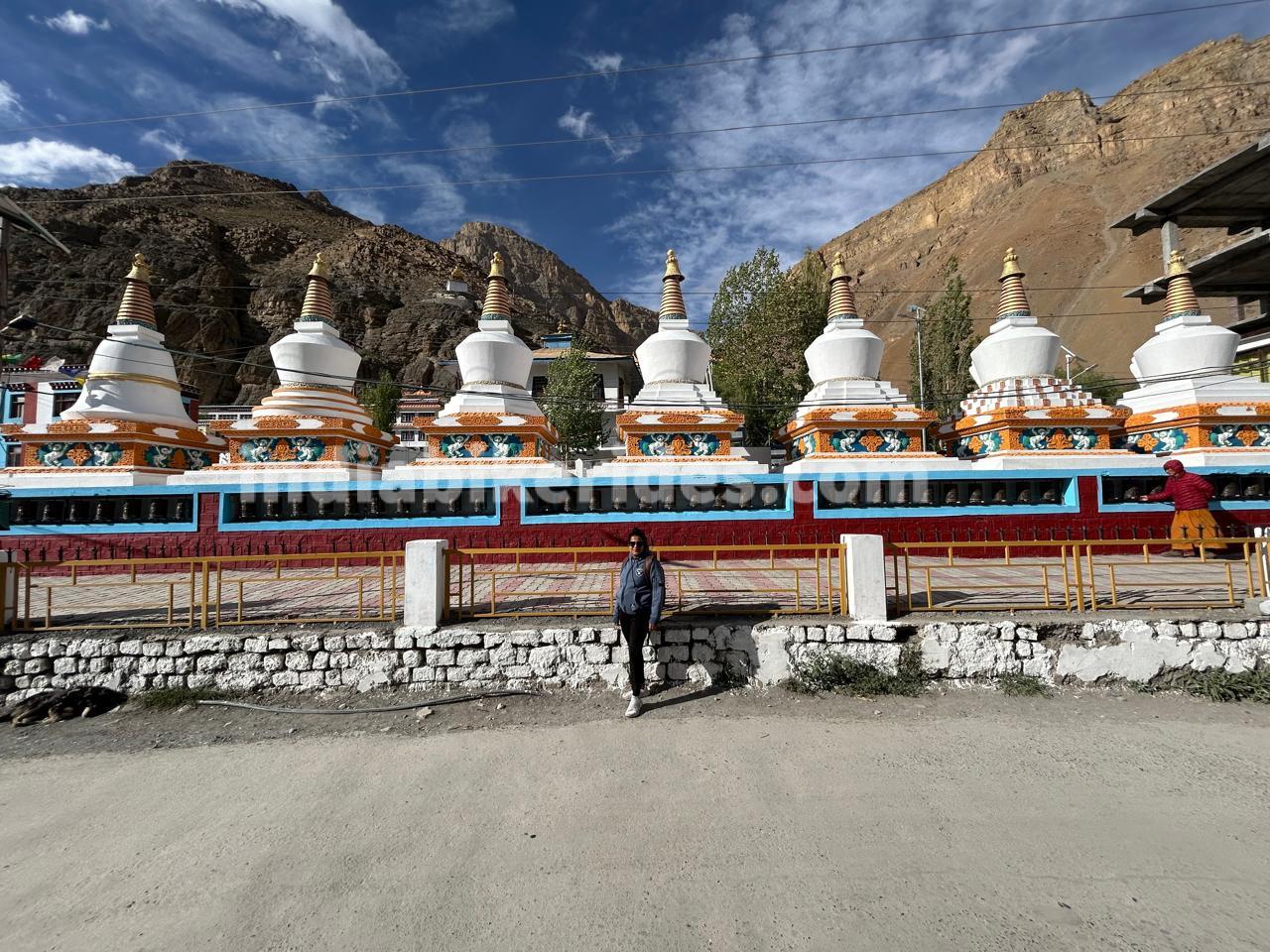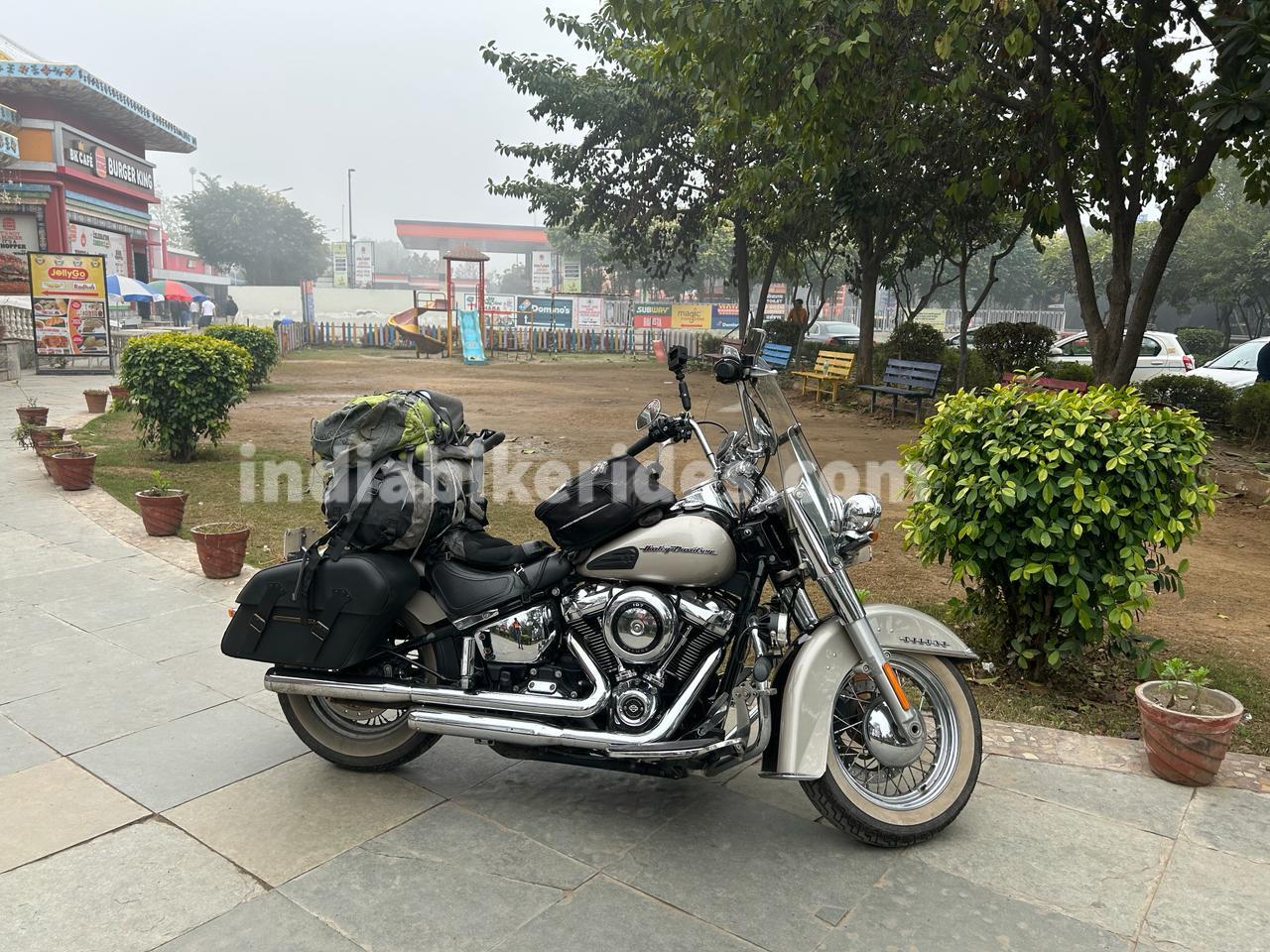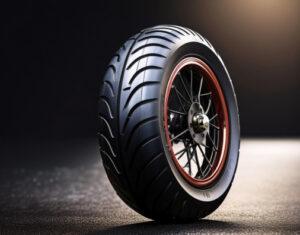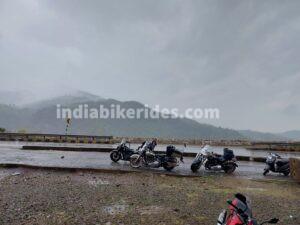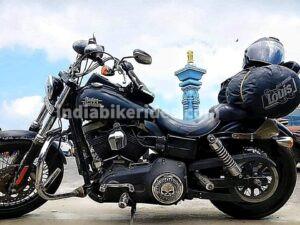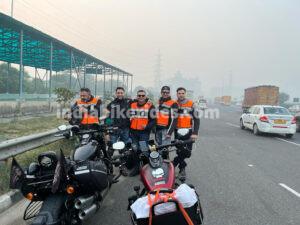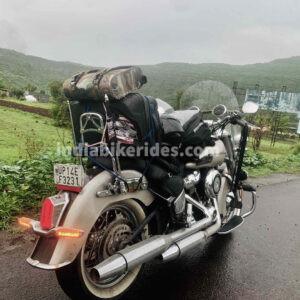Spiti Valley circuit
Spiti valley circuit is incredibly famous for adventurous road trips in the Himalayas. Given its adventurous status it attracts many motorbike and car enthusiasts to complete this circuit every year. Here I will describe the popular places, things to do and the best time to visit this popular circuit.
The route of Spiti valley:
Chandigarh – Shimla – Narkanda – Rampur Bushahr – Karcham – Chitkul – Kalpa – Nako – Tabo – Kaza – Chandra Taal lake – Batal – Chhatru – Koksar – Atal tunnel – Manali – Mandi- Bilaspur – Chandigarh. (~ 1100 Kms)
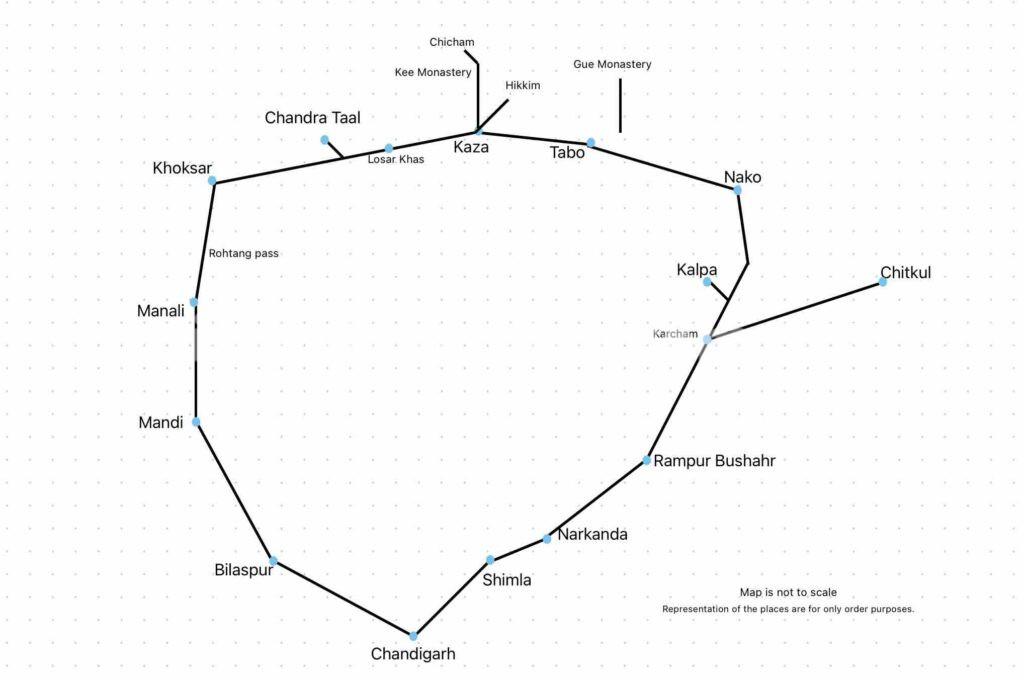
The plan considering acclimatization, nearby attractions, enjoying the nature:
Day 1: Chandigarh to Shimla (~100 Kms)
Start from Chandigarh after breakfast and target to reach Shimla by lunch time. It takes approximately 3 hours of drive depending upon the traffic conditions. Stay in Shimla for an overnight and enjoy the evening walk on the beautiful mall road furthermore you can extend your stay at Shimla to visit the nearby attractions.
On the way/ around popular attractions:
- Barog Station
- Mohan Shakti Temple, Solan
- Kufri top
- Naldehra
- Tattapani water sports
- Indian Institue of Advance Studies, Shimla
- State Museaum, Shimla
Day 2: Shimla to Chitkul (~ 250 Kms)
Have an early start from Shimla, as it is going to be a long driving day. Eventually, take a breakfast stop on the way near Theog or Narkanda, after a quick breakfast proceed to Chitkul. The route is very scenic like any other route in Himachal, therefore, take stops for memorable clicks. Throughout the time till you reach Karcham, the roads are good, but afterwards all the way till Chitkul roads are bad (as of June 2024). Chitkul is an amazing place, it is very cold in general, albeit extremely beautiful. Mobile network coverage is bad. Therefore, once you are planning to stay there, consider yourself isolated from the outside world. Staying disconnected is one of the beauties of the place.
On the way/ around, popular attractions:
- Hatu Mata temple, Narkanda
- Apple orchids
- Karcham Dam
- Sangla
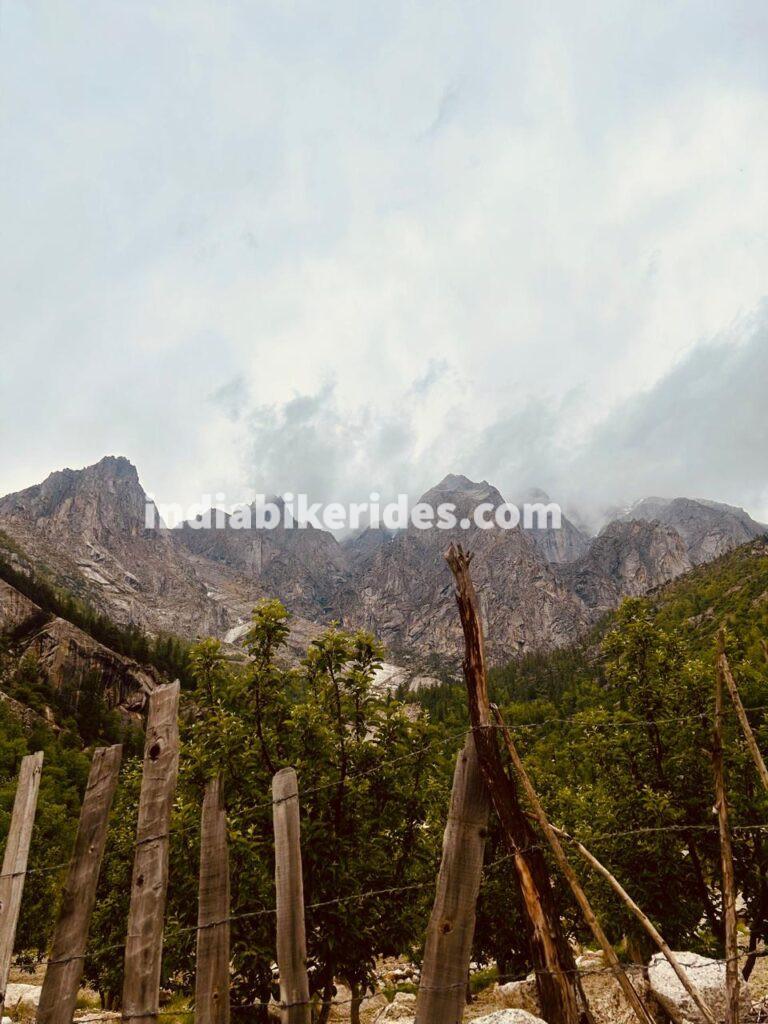
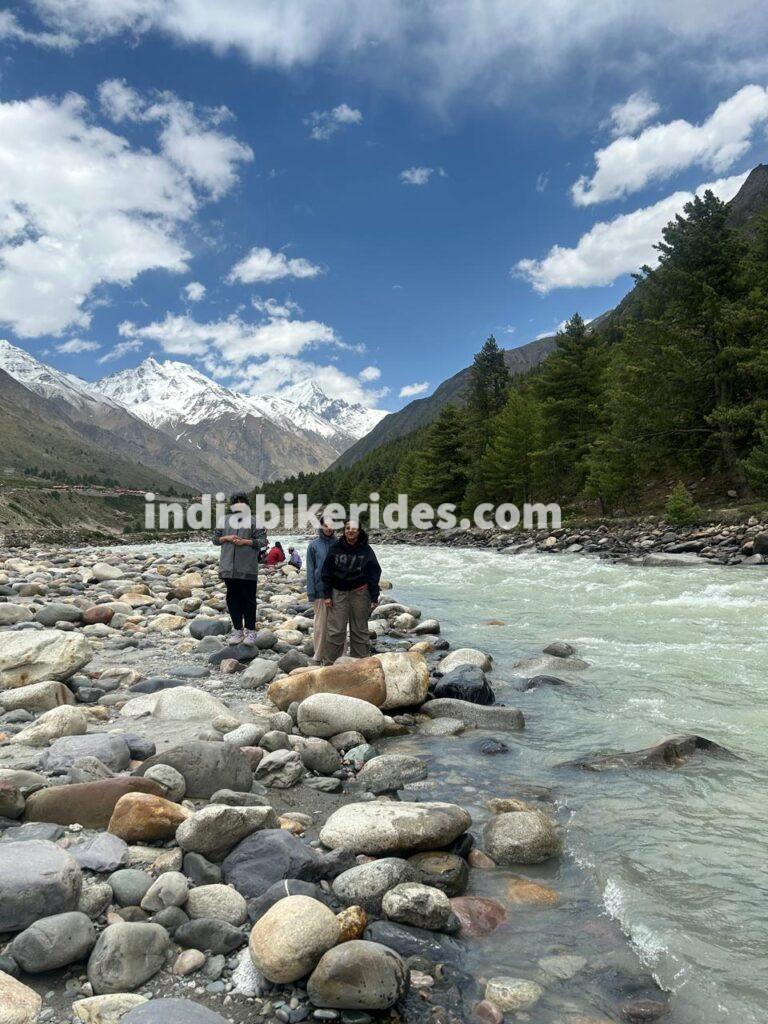
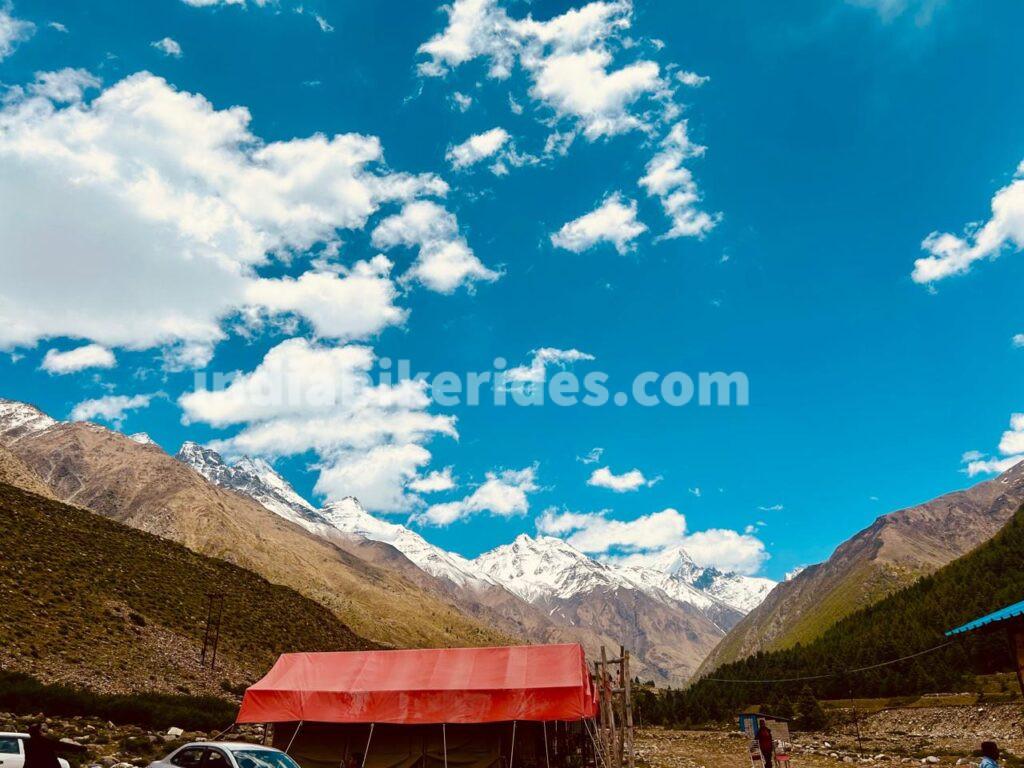
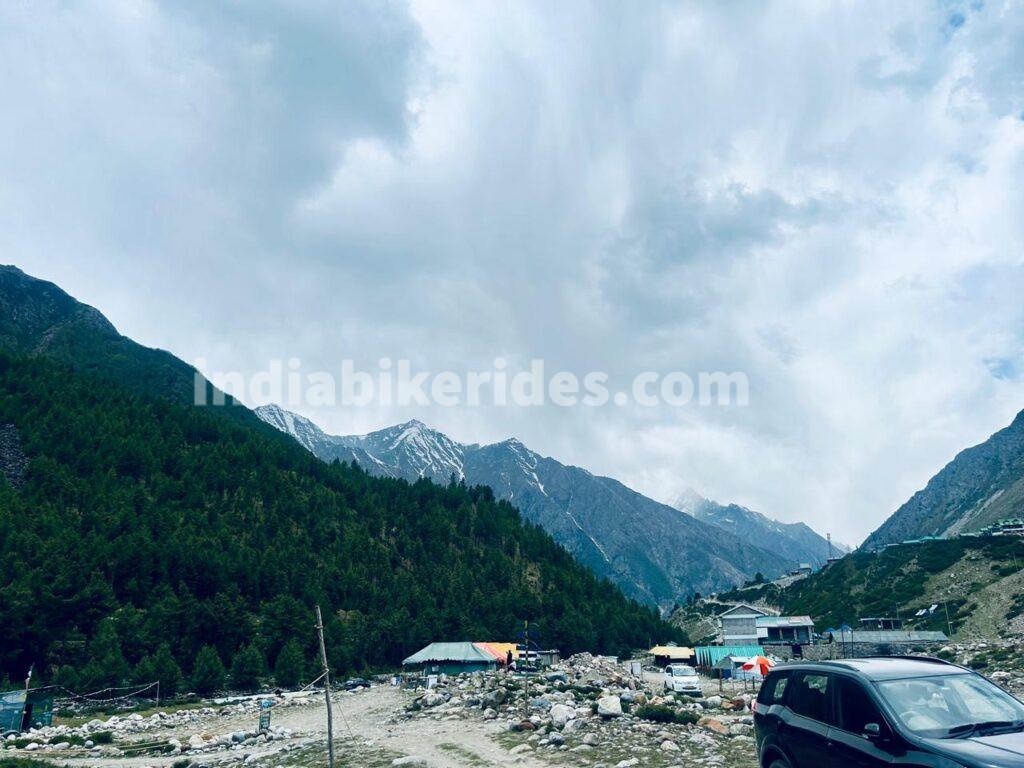
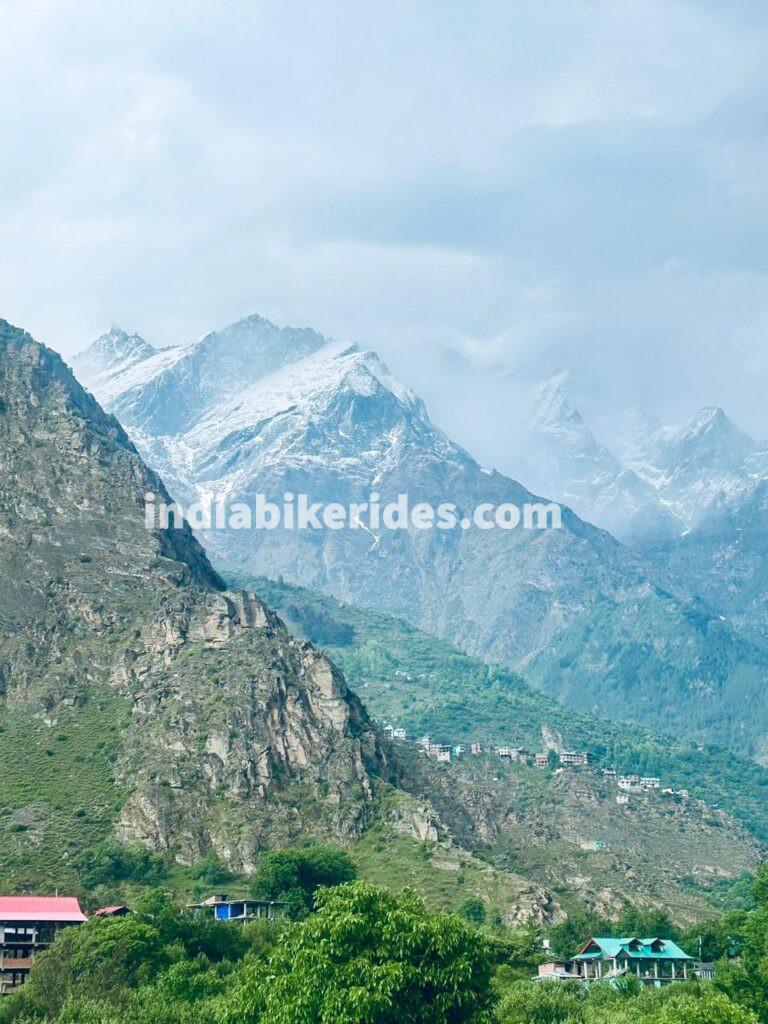
Day 3: Chitkul to Nako via Kalpa (~ 175 kms)
However, it’s always up to you if you want to extend your stay at Chitkul, because you are already acclimatized and Chitkul is at a particularly good altitude. You are fully ready to move ahead. As per my itinerary I didn’t go to Nako directly from Chitkul. I did an overnight stay at Kalpa, which is a beautiful town, and the view of Kinnaur range is breathtaking from here, along with it the view of Sutlej River is amazing. Although it is a short distance, therefore after capturing a few memories you can also continue to Nako for the night’s stay. Nako is a small village with very few facilities/ network coverages, due to security reasons given its proximity from China border.
On the way/ around, popular attractions:
- Reckong Peo
- Sutlej River
- Spiti river
- Khab Sangam, the merging point of Spiti river into Sutlej river
- Nako helipad
- Nako Lake
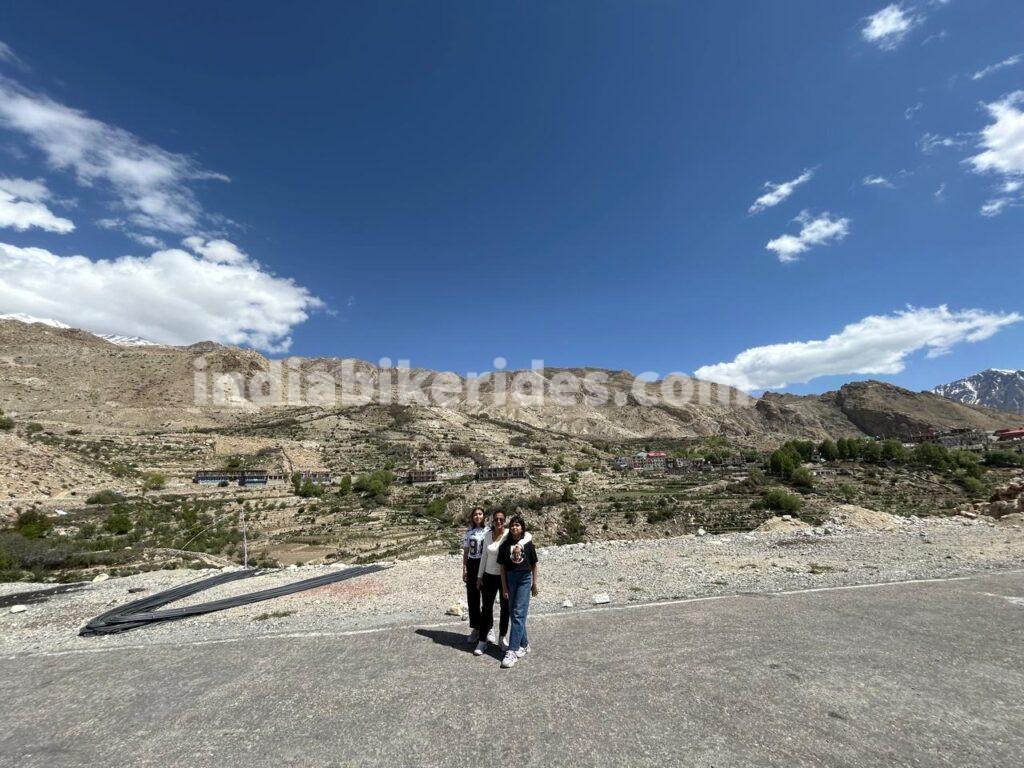
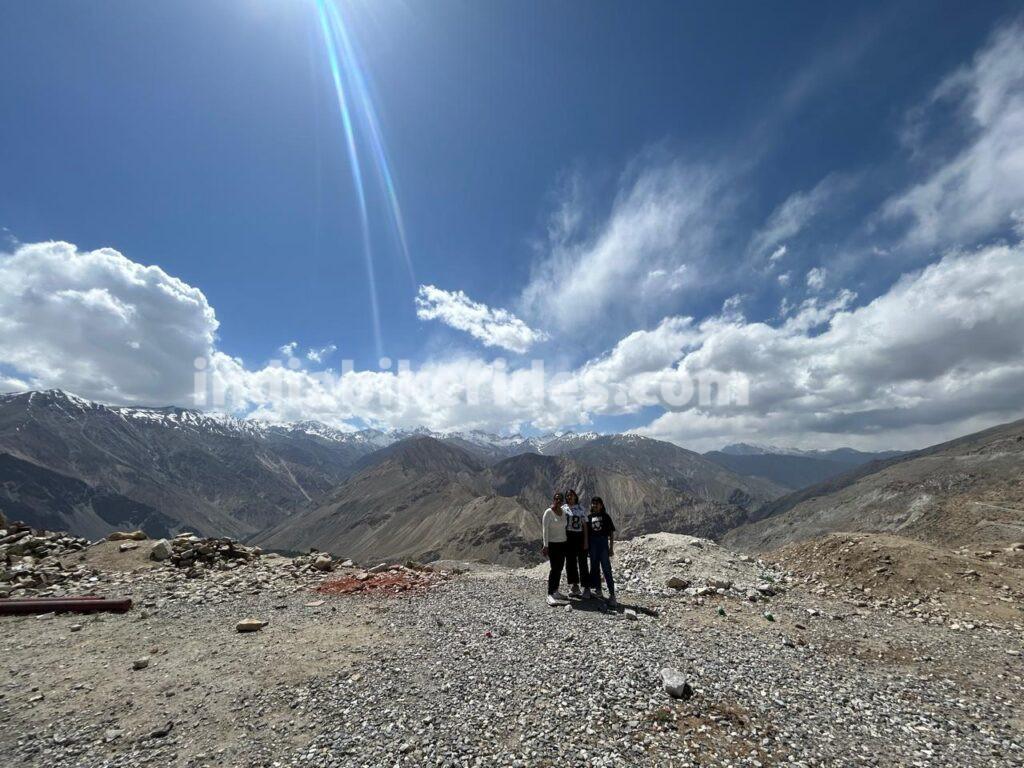
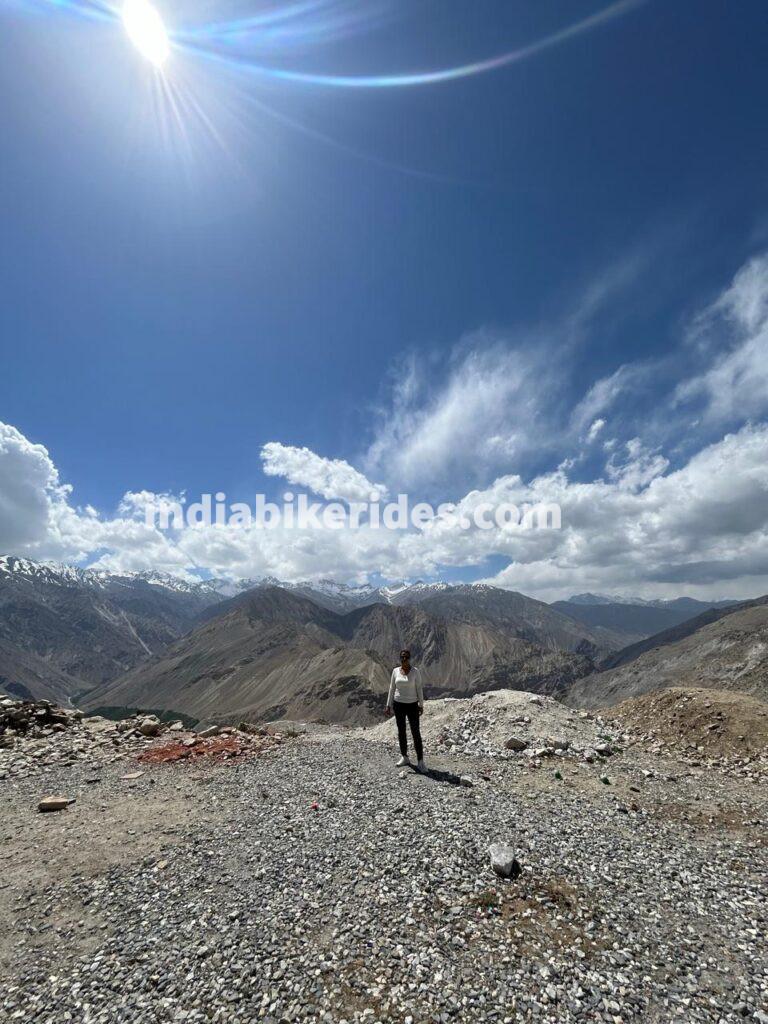
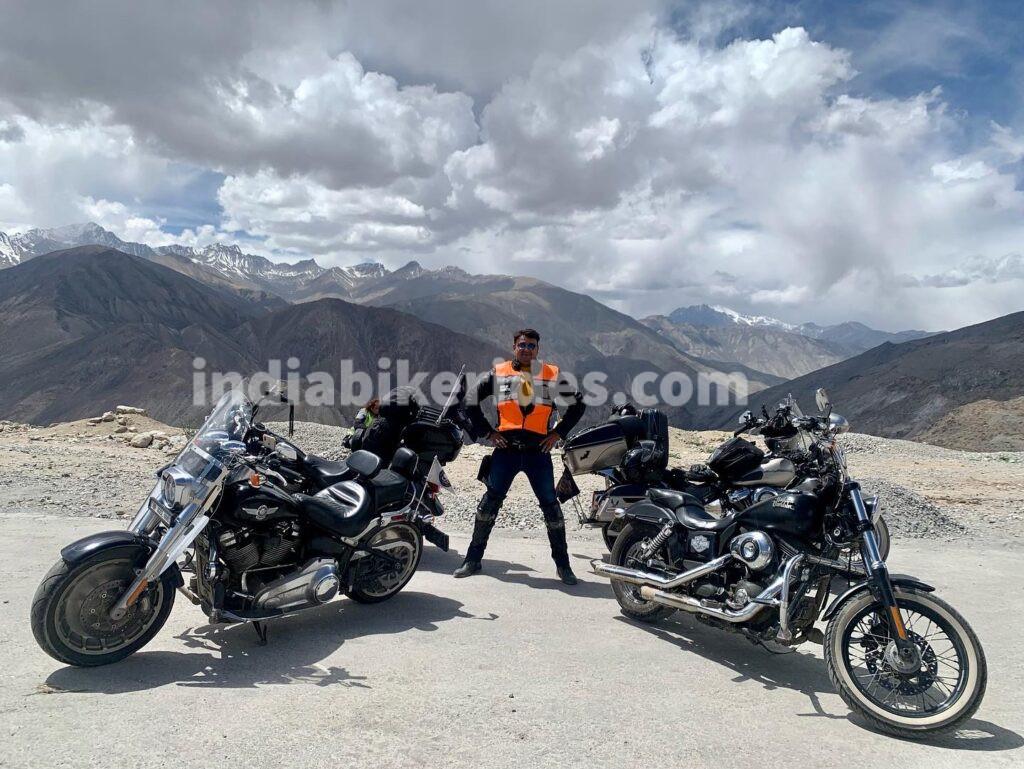
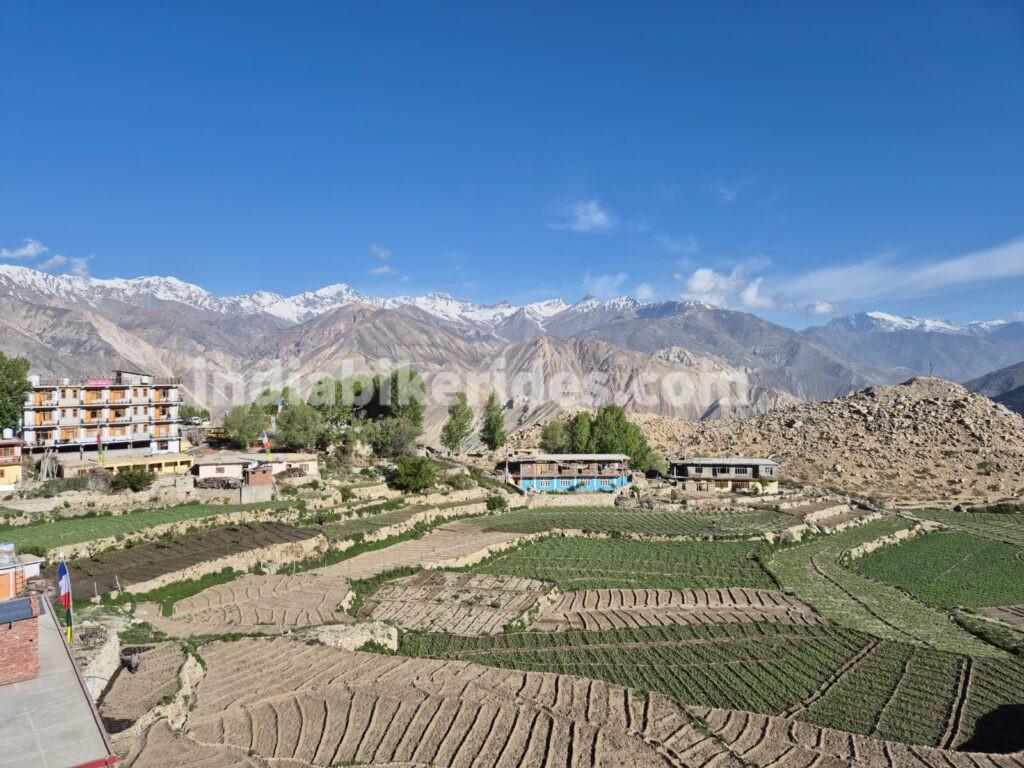
Day 4: Nako to Kaza via Tabo (~ 111 Kms)
Nako to Kaza is an extraordinary drive. On the way you will witness snow covered mountain peaks throughout summer. The whole Spiti valley road is closed in winter due to the heavy snowfall, therefore maintenance of the road is a big task. There is a famous Gue monastery. To reach there you need to take a little detour from the main road. It has a famous naturally preserved five hundred years old mummy of a Buddhist Monk. After visiting Gue, you can have a night’s stay at Tabo as well given it is surrounded by natural beauty and has the famous Tabo monastery alongside the famous caves. Additionally, if you can cover these places quickly, thereafter you can proceed to Kaza the same day by the evening. Else give a day to explore them.
On the way / around, popular attractions:
- Gue monastery
- Tabo monastery
- Tabo caves
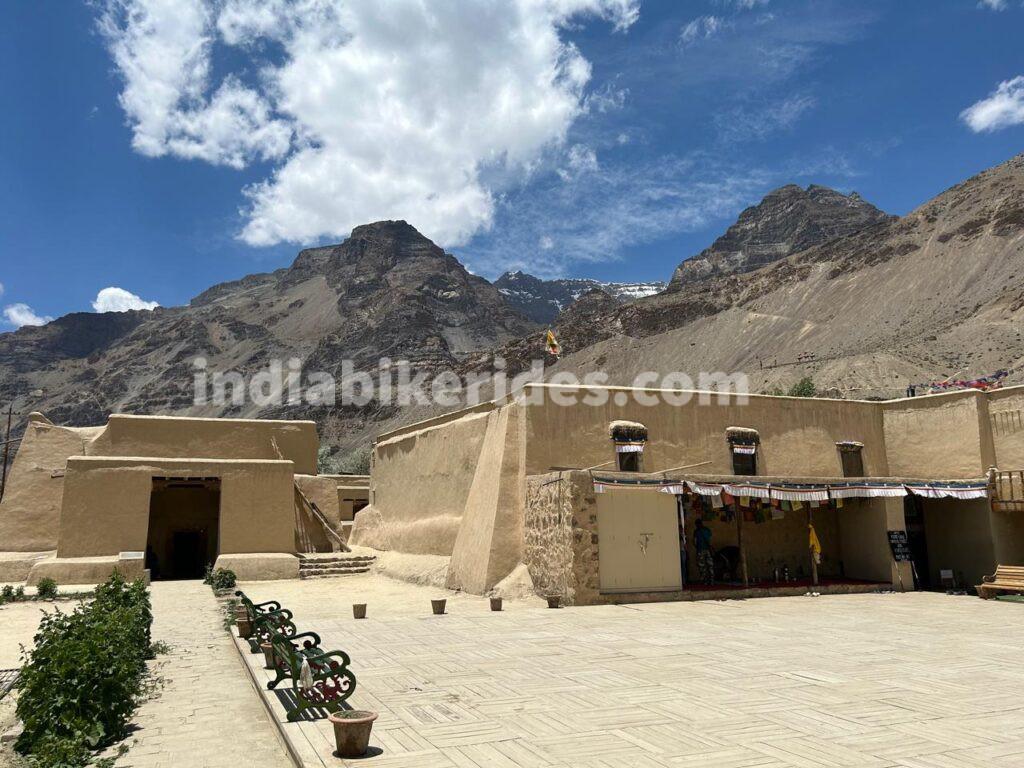
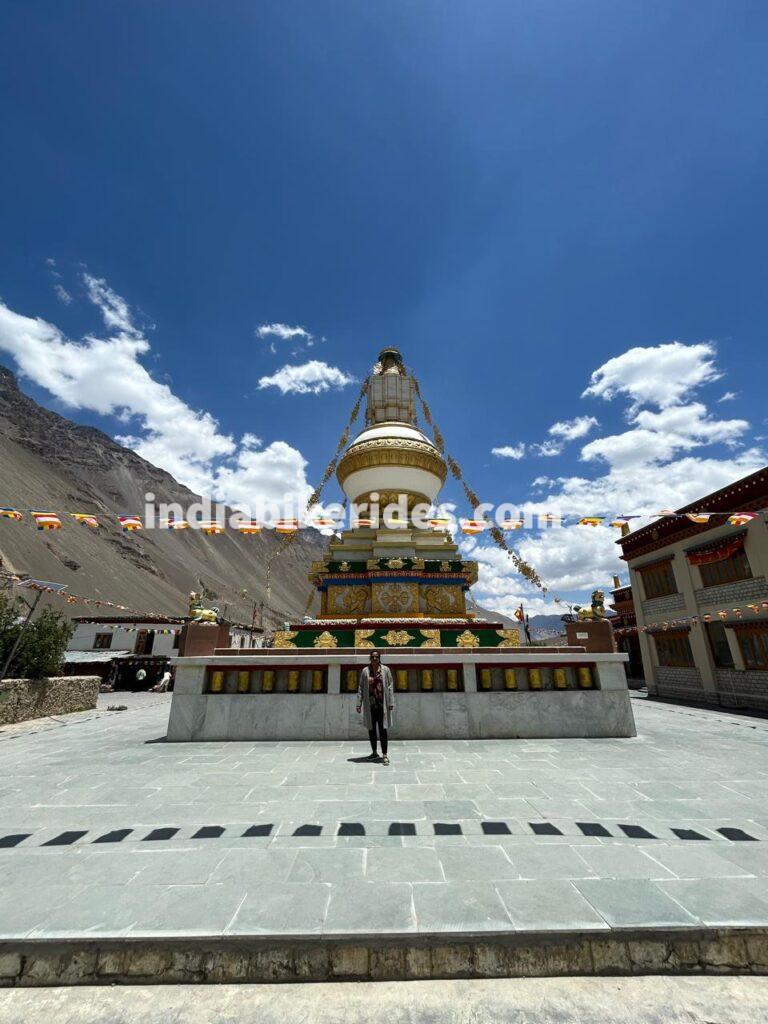
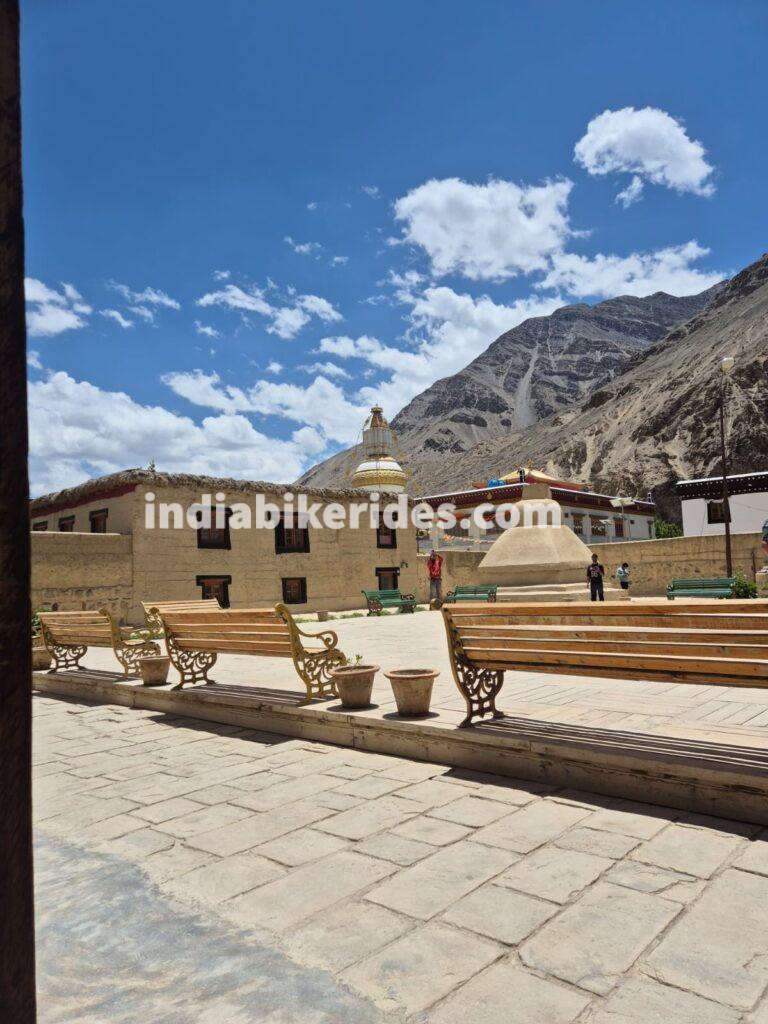
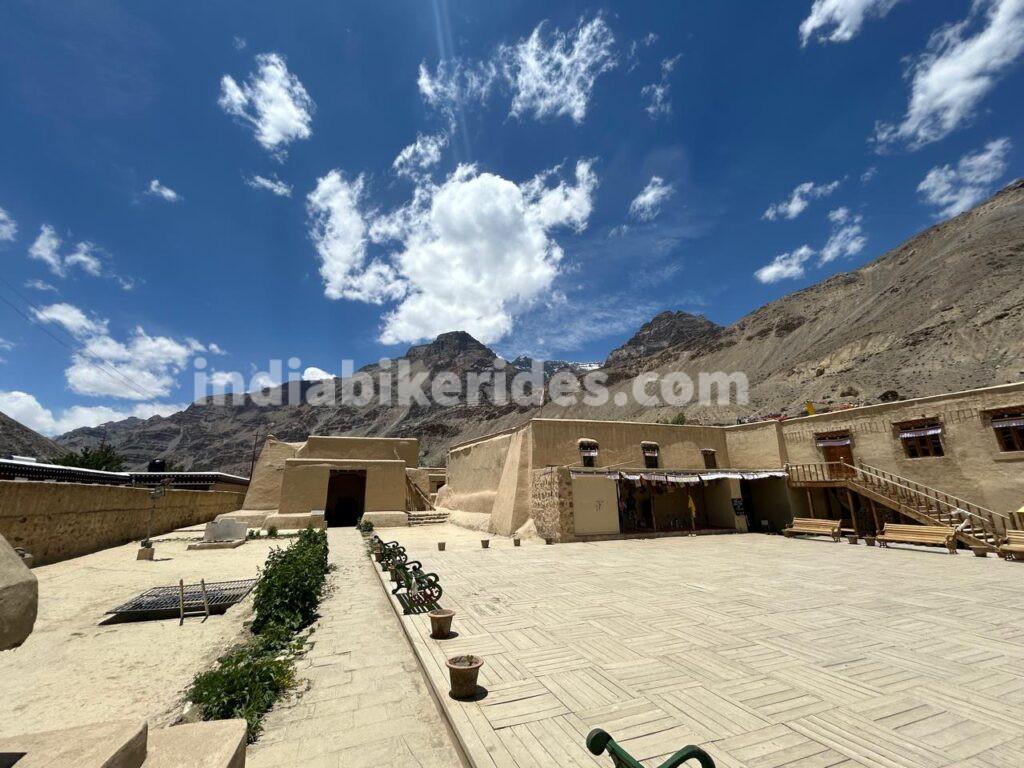
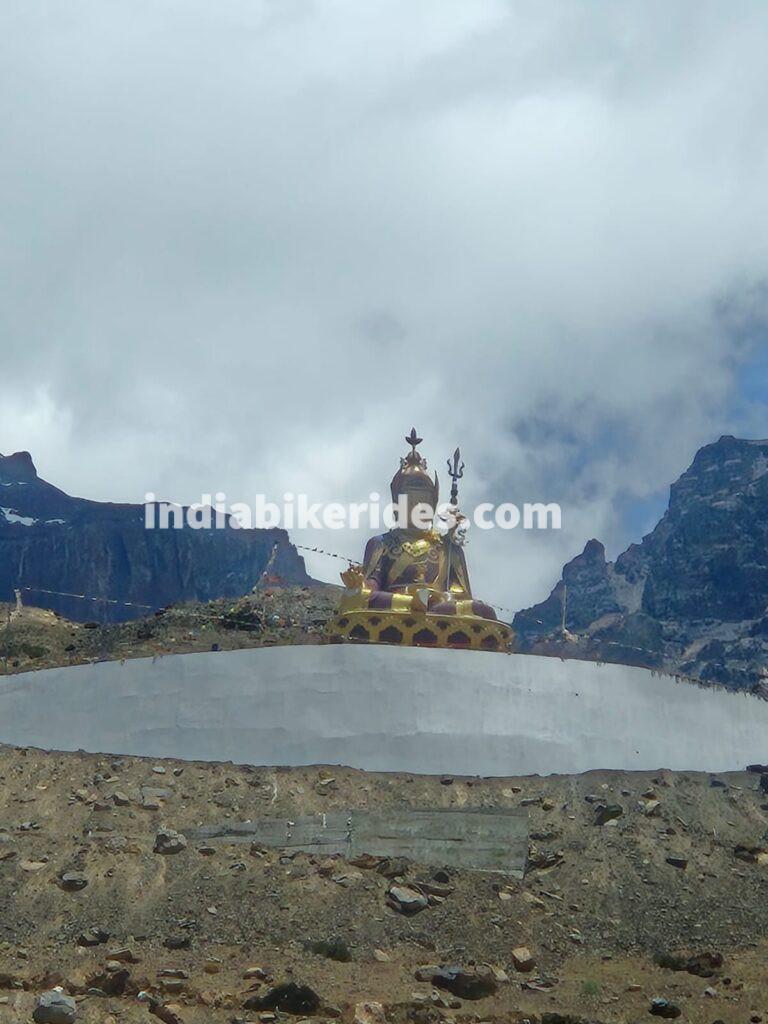
Day 5: Stay at Kaza and visit nearby points
Try to spend at least a day at Kaza and try to cover the nearby attractions. You can visit the banks of Spiti river, Kaza local market and buy some momentos. There are many popular nearby attractions, some of which are: Chicham bridge, the highest suspension bridge of India, Kee Monastery and Hikkim village which have the highest post office of India. There is no doubt that this whole region is a must visit place.
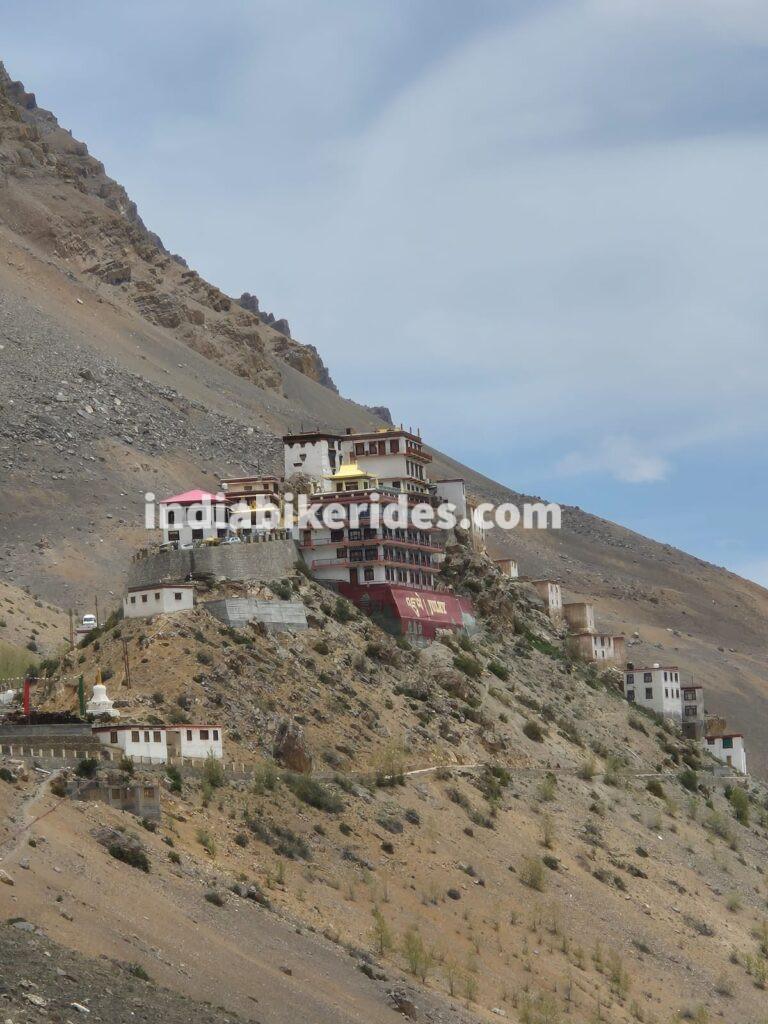
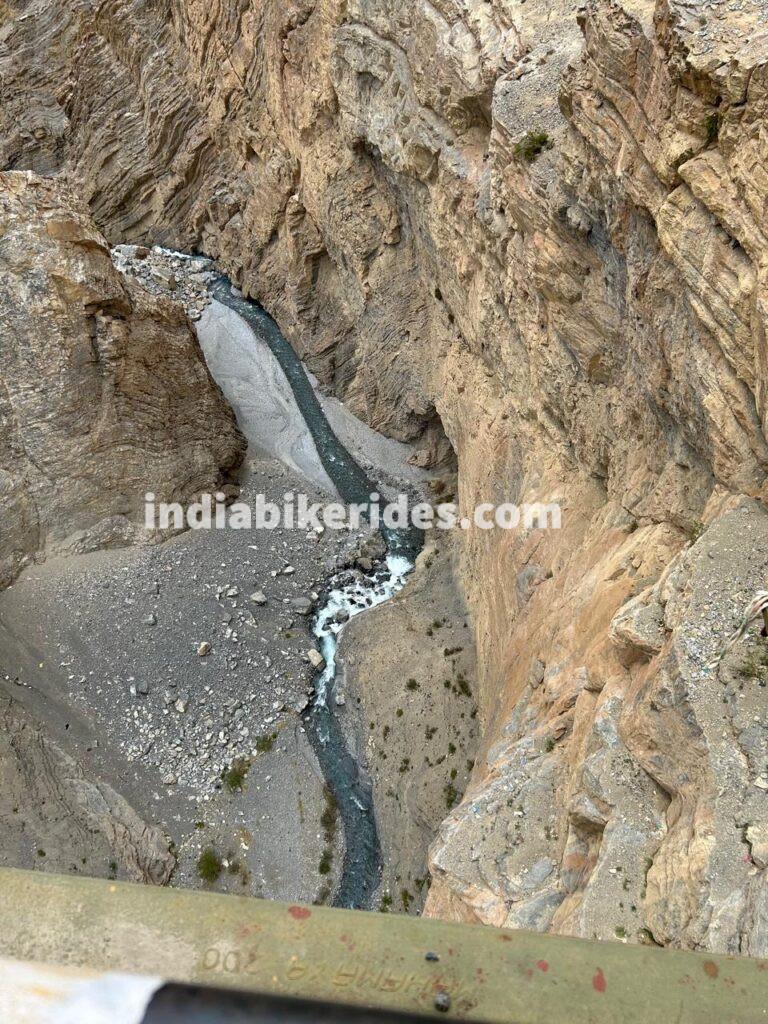
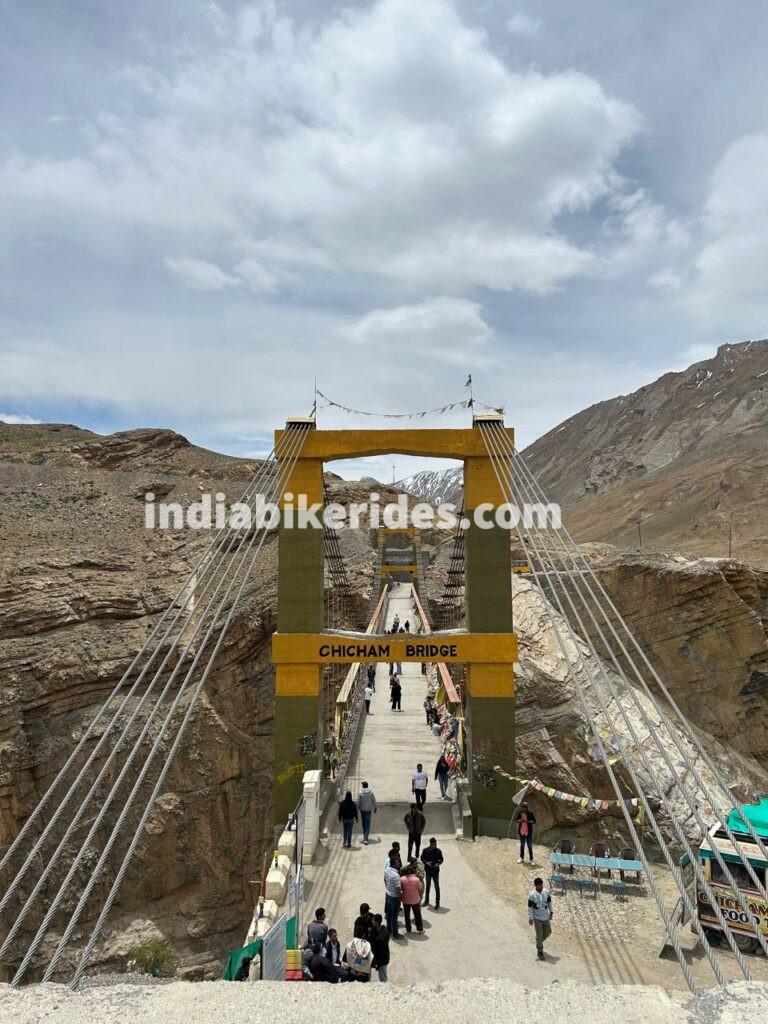
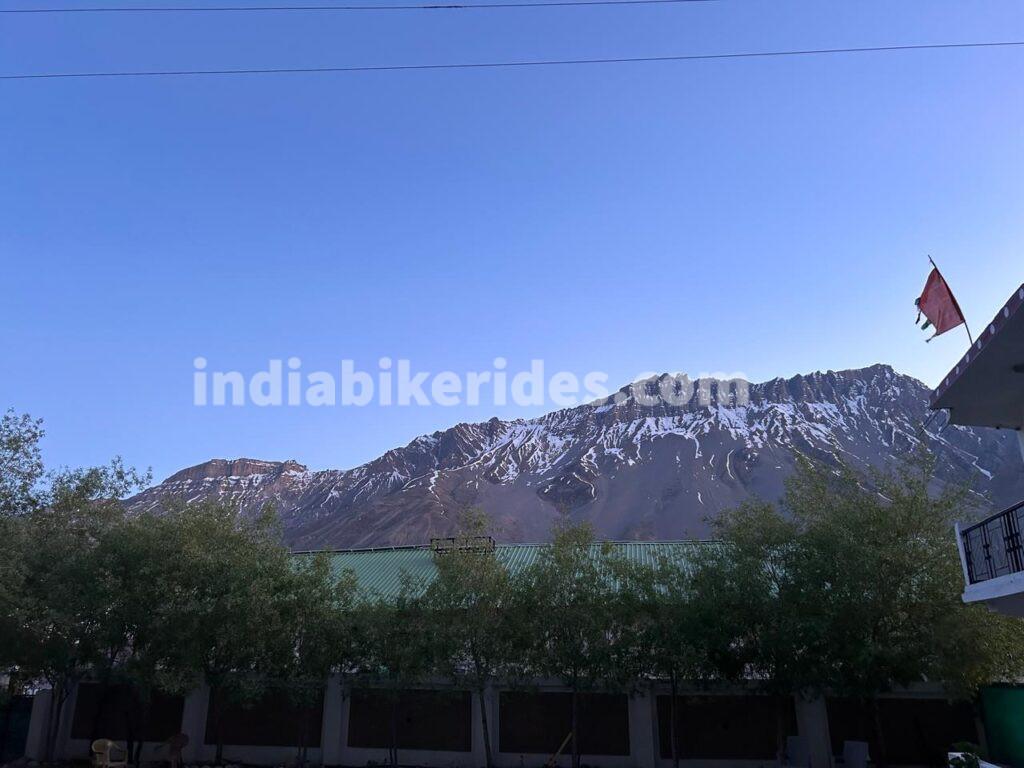
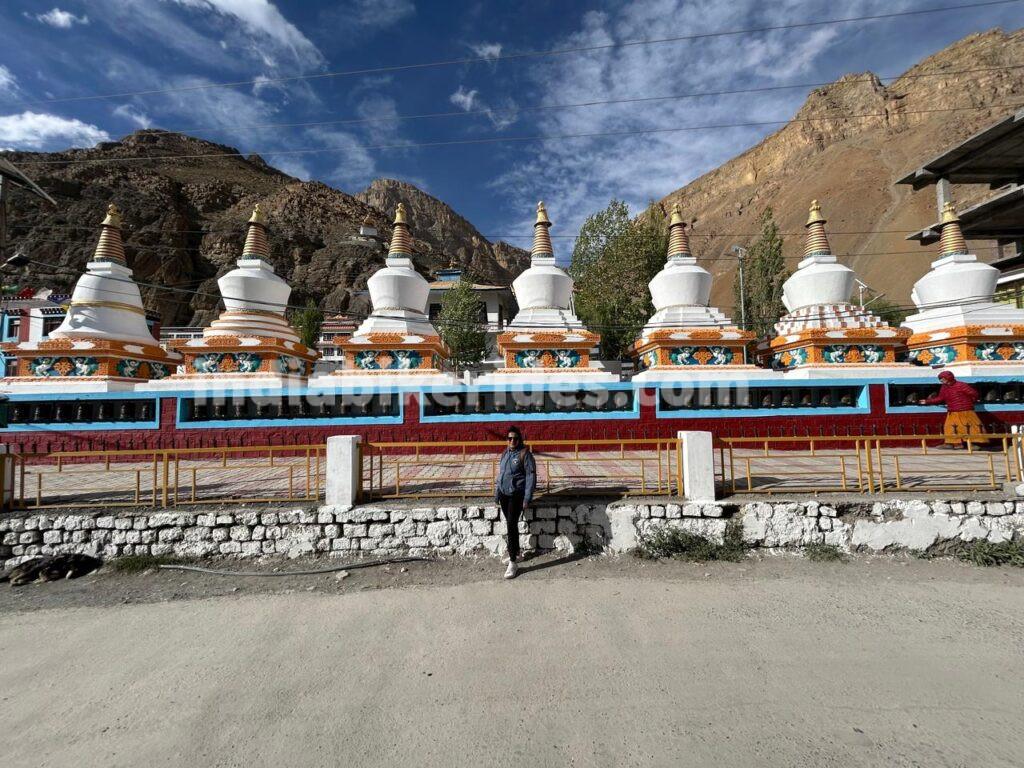
Day 6: Kaza to Manali (~183 kms)
Here comes the most adventurous part of the whole circuit. Kaza to Manali, which doesn’t have proper roads. Although the distance of this stretch is just 180 Kms, and the continuos drive may take approx 8-10 hours. Never believe what google maps or any other maps application says about timings to do this route. Which often leads to confusion amongst the frequent users. One must try to leave as early as possible in the morning, in order to avoid oncoming traffic. The roads are narrow near Kunzum pass and generally they have a lot of obstructions in the form of big rocks. Further from Losar Khas to Khoksar, there is no network of any kind. Because of no network in the entire region, these map applications can’t track the real traffic conditions.
In general, this route is mostly closed due to bad upkeep, which happens majorly due to the harsh weather around the year. Due to too much snow it is very difficult for normal drivers to even attempt driving here. You can barely manage a mileage of 12-15 kms per hour even in an SUV. It may be possible that I am just a slow driver.
Generally, the most popular attractions of these routes are Chandra Taal Lake, Kunzum pass and Chenab River.
In fact, Chandra Taal is a treat to watch and certainly is one of the most serene places. Kunzum pass on the other hand is one of the highest passes of Himachal Pradesh. If you are a real nature lover, then have a night’s stay on the way. Normally, during the season there are some camp sites setup near Chandra Taal, Batal and Chhatru, which offers accommodation. Nonetheless believe me, you are cut off from the rest of the world.
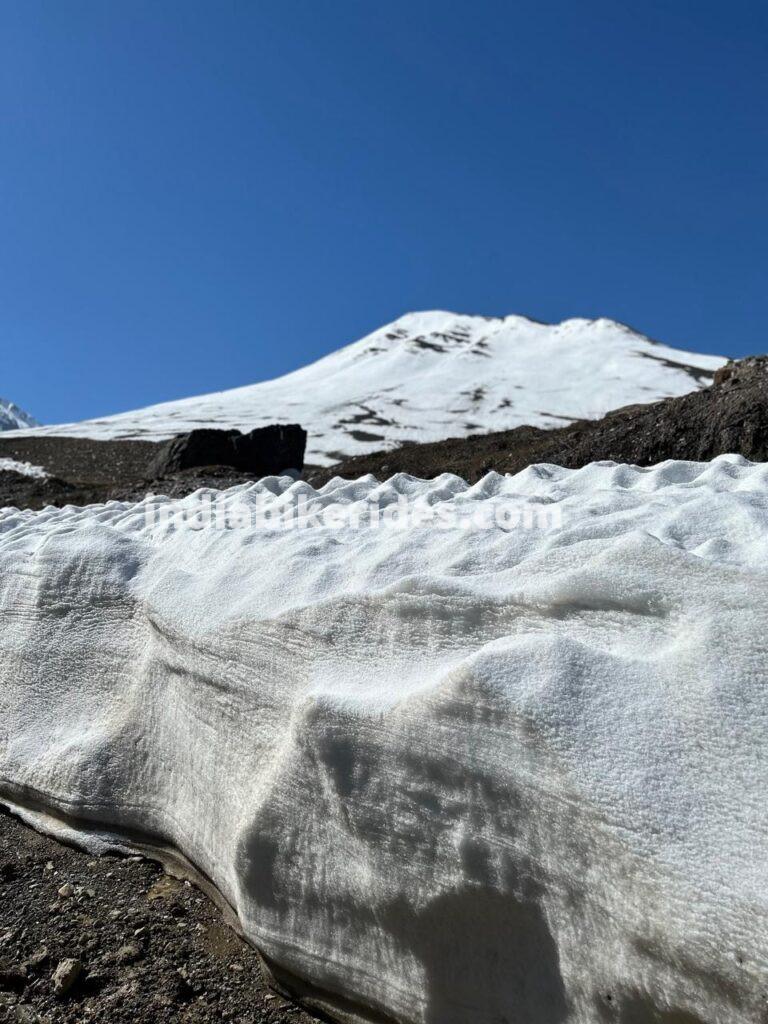
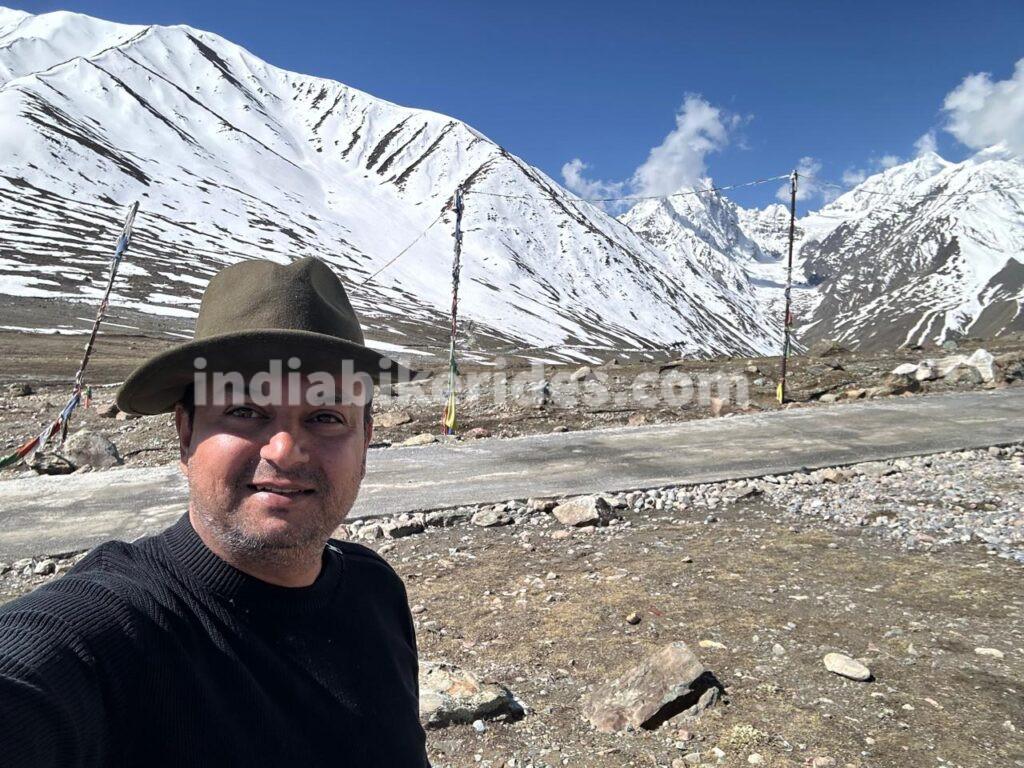
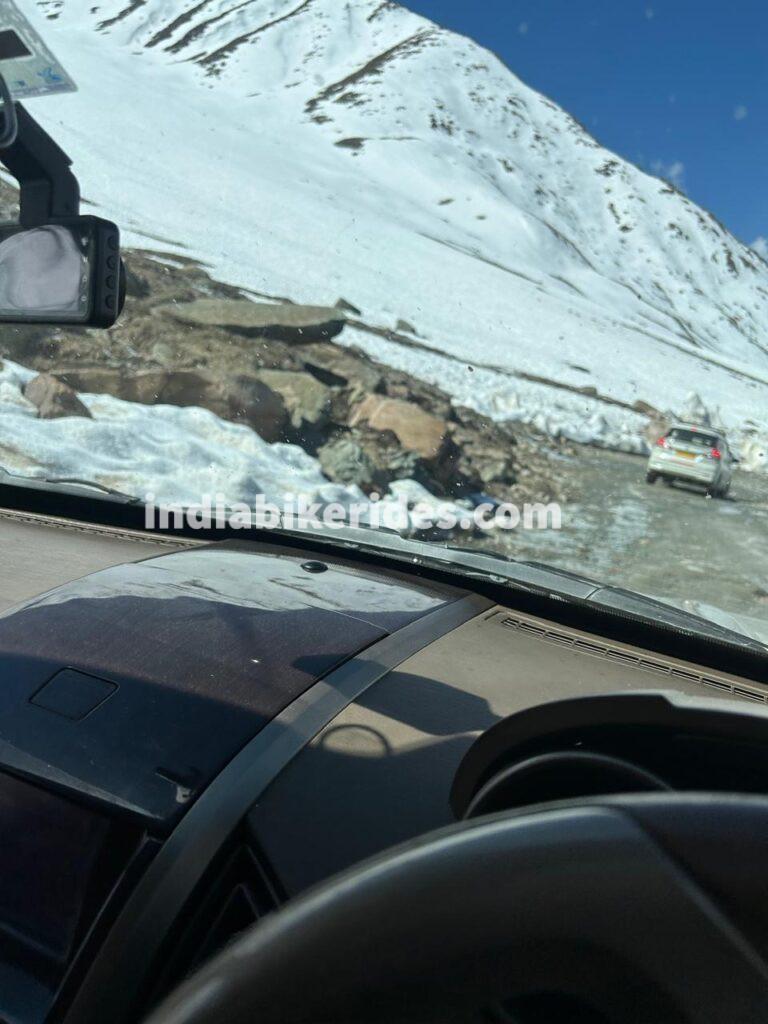
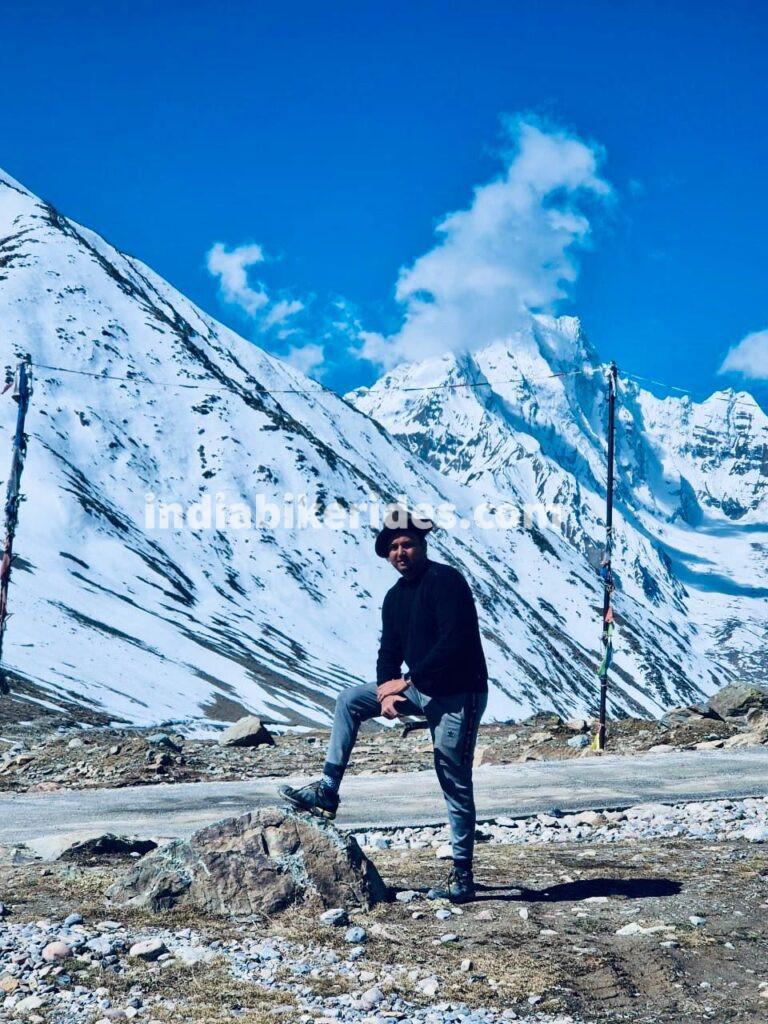
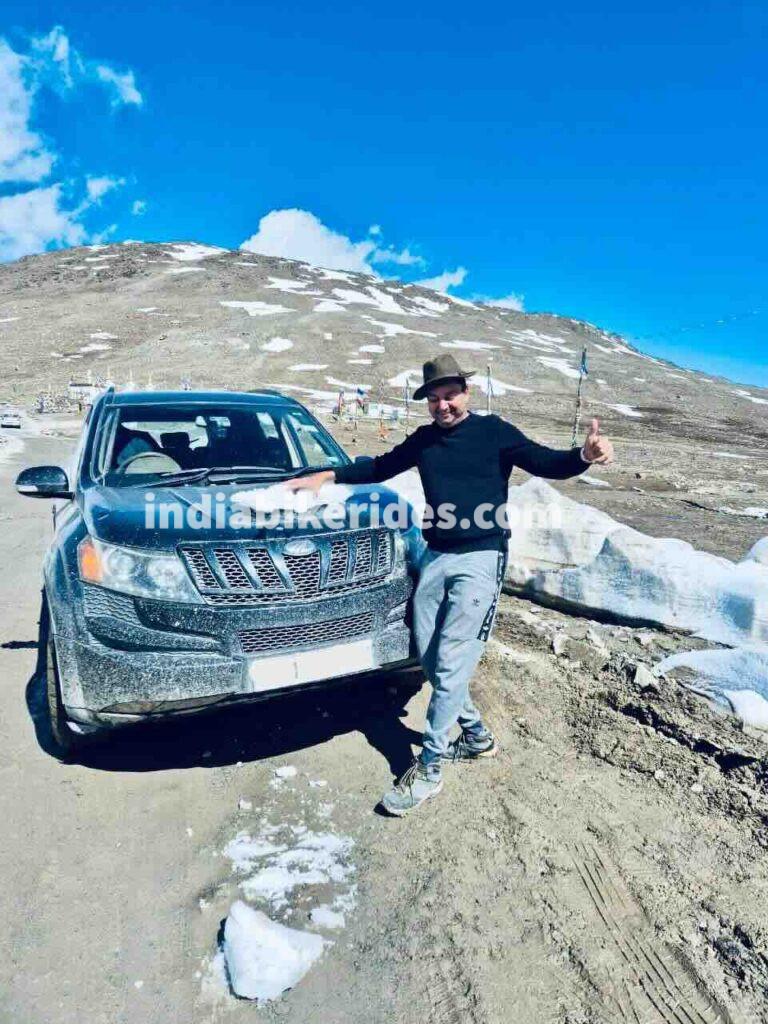
Day 7: Manali to Chandigarh (~271 kms)
The roads from Manali to Chandigarh are particularly good and in most of the places there is a 4-lane highway. This patch is being developed at a very rapid pace; therefore, it is allowing a lot of tourists to visit Manali easily. Also, you can have a night’s stay at Manali and see the nearby attractions. Further, on the way back you can also have a night’s stay at the extremely popular Kasol or Manikaran in Parvati valley.
There are always a lot of options nearby any popular tourist places therefore, it’s extremely difficult to cover each and everything.
The best time to visit Spiti Valley: from March to June.
Available mobile networks: There are many isolated places on this route, which doesn’t have any mobile network coverage. But in the main town areas Airtel and Jio are the only working networks. I am sure Vi doesn’t work in the entire Spiti region, and I haven’t tested any other mobile networks. If there is any kind of emergency, then there is a low chance (but still a chance) that some business owner or military personnel can help with the satellite phones.
Check out the shorts and videos of this road trip here >> Spiti Valley road trip

